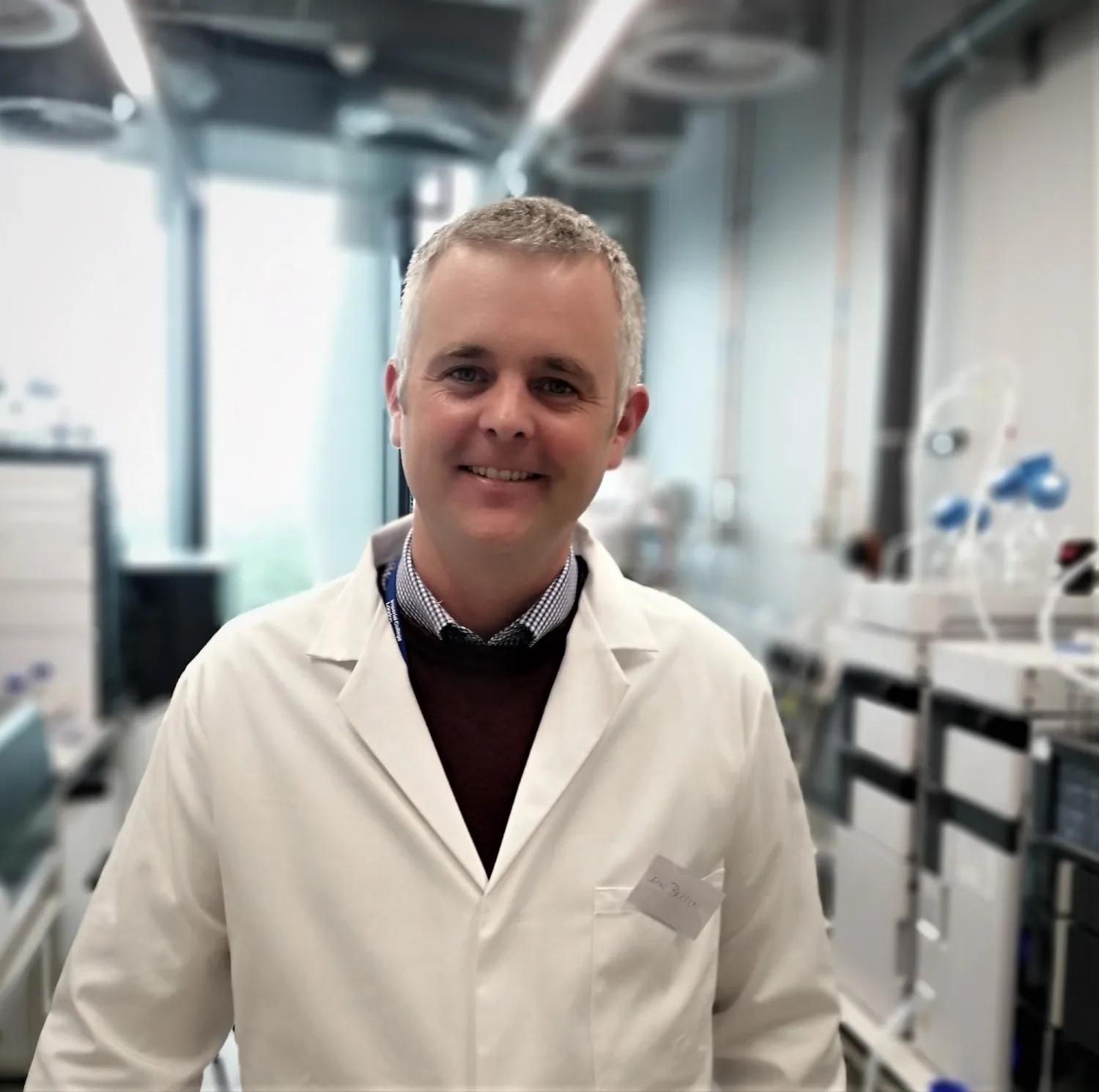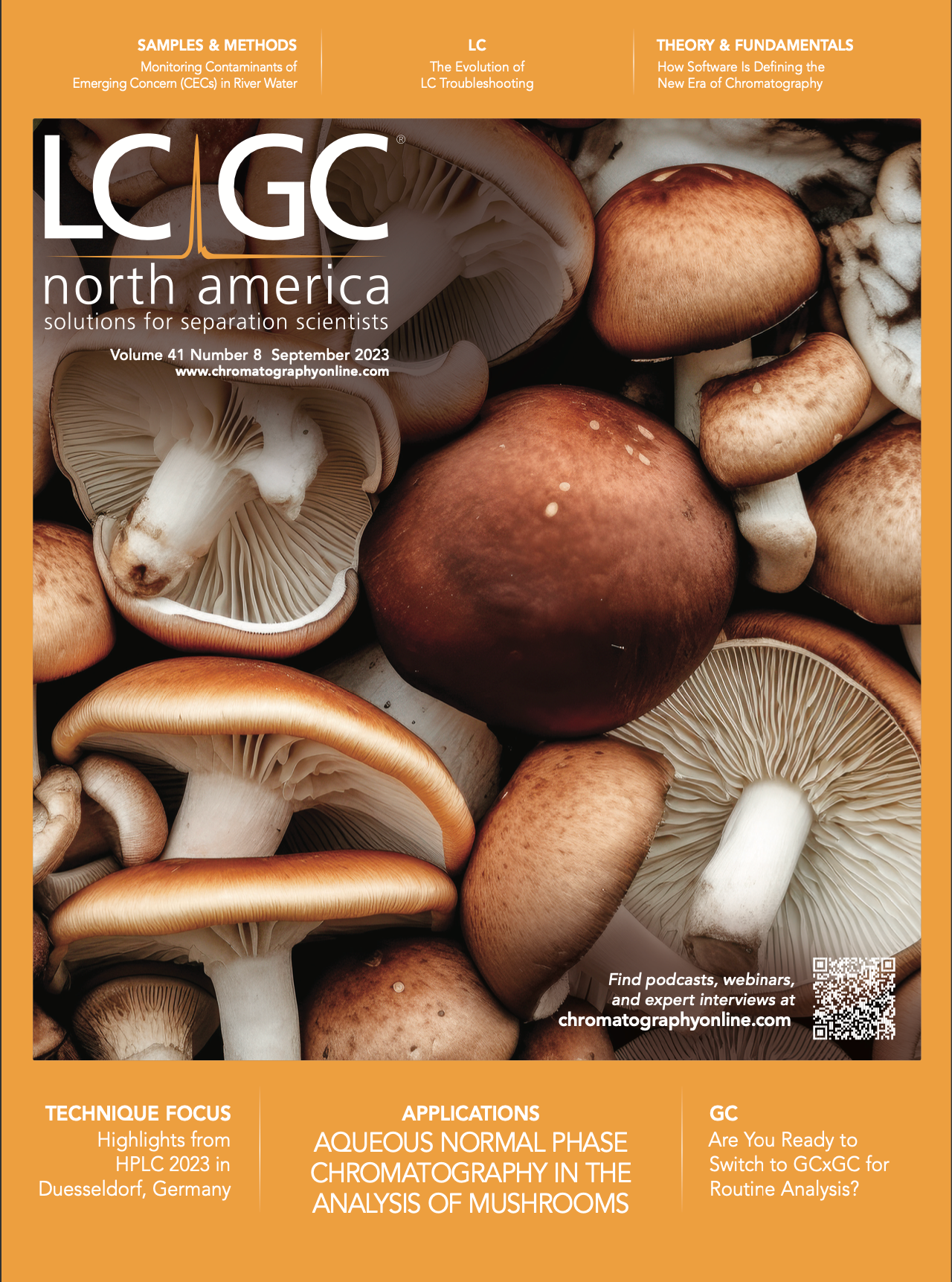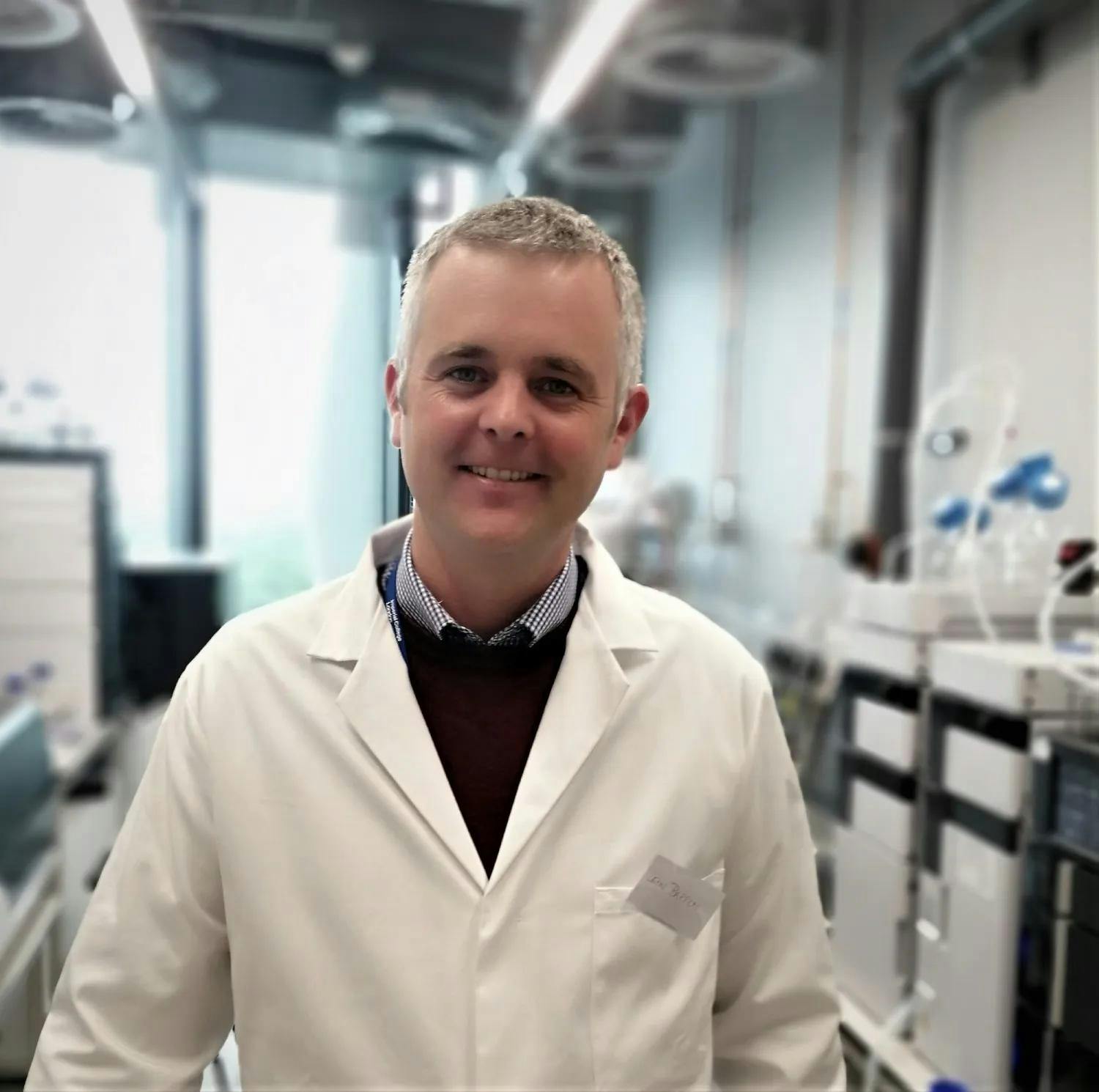Monitoring Contaminants of Emerging Concern (CECs) in the Environment
LCGC spoke to Leon Barron from Imperial College London, UK, about his work developing a fully miniaturized workflow incorporating a three-dimensional-printed passive sampler device (3D-PSD) to monitor contaminants of emerging concern (CECs) in river water.
ABOUT THE INTERVIEWEE
Leon Barron received both a B.Sc. in analytical science (2001) and a PhD in analytical chemistry (2005) from Dublin City University (DCU), Ireland. Following four years of postdoctoral research into CECs in the environment, he moved to King’s College London as a lecturer in forensic science in 2009, where he led the Environmental and Forensic Chemistry group for 11 years. He was promoted to senior lecturer in 2015. He moved to Imperial College London in 2020 and was promoted to reader in analytical & environmental sciences that year. He has published more than 85 peer-reviewed articles in the fields of analytical chemistry, environmental pollution, ecotoxicology, and forensic science. He is a fellow of the Royal Society of Chemistry, the Chartered Society of Forensic Sciences, and the Higher Education Academy. He is also an elected member of the Analytical Science Community Council and the Separation Science interest group committee at the Royal Society of Chemistry.

You recently developed a fully miniaturized workflow incorporating a three-dimensional-printed passive sampler device (3D-PSD) to monitor contaminants of emerging concern (CECs) in river water (1). What chemicals of emerging concern are you investigating and why?
Our research interests lie in improving the understanding of the occurrence, fate, and potential impact of chemicals in the environment. As approximately 350,000 chemicals are currently licensed for manufacture and sale globally (2), this sets a very large challenge to us as analytical chemists. Indeed, it has been estimated that we have exceeded our safe threshold for “novel entities” such as chemicals to ensure healthy and sustainable life on Earth, and this issue arguably represents the third greatest planetary crisis behind climate change and biodiversity loss (3). Of all of these chemicals of emerging concern (CECs) are those that have been detected in the environment but that do not fall under any regulatory framework, with concerns being held about their potential environmental impacts. This work was the focus of Alexandra Richardson’s PhD (1). We focused on a more modest set of 164 substances, including drugs (both medicinal and illicit), personal care products, and pesticides, as well as some of their metabolites and transformation products.
We have traditionally focused on CEC residues mostly in water, including wastewater, surface and ground water, and drinking water, and we generally see that chemical residues pervade all of these aquatic compartments. We then assess the environmental risks, including through biomonitoring, and effect assessment in selected species. Recently there has been an increased concern in the UK about untreated wastewater, including combined sewer overflows (CSOs), where the wastewater in sewers and the capacity to treat it is exceeded and it is discharged directly into river catchments. We have been trying to better understand the scale of this issue from a chemical residue perspective (4). Still one of our most difficult questions to answer is: “Where should we take a sample to reliably give us the information we need to identify and mitigate CEC sources?” Many sources of chemicals in the environment are not as obvious and may be diffuse in nature. Understanding what, where, when, and why these chemicals occur in the enviironment is critical to understanding their potential risks.
Why did you decide a 3D-PSD was necessary for this type of analysis? What benefits does this device offer compared to previous methods?
Traditionally, most disk-type passive samplers have used a standard 47 mm format, but nothing prevents these being bigger or indeed smaller. In our case, we wanted to make something smaller, cheaper, multifunctional, and more suited to larger-scale monitoring programs. At the time, we thought that the fastest way to make prototypes was to use 3D-printing because we did not have access to a workshop or any advanced manufacturing equipment. As a result, concept designs were made into working prototypes to trial on the same day. It was not initially our intention to just focus on 3D-printed materials in the final design, but in the end, the print-on-demand flexibility it offered, along with its performance, meant that we have kept using it. In our open access paper, we provided the computer-aided design (CAD) files for anyone to 3D-print and trial the final design themselves, as well as a step-by-step guide on how to use it. The materials cost for each device including a compatible transport cap was <£3 GBP and the print time was 1.93 h. Of course, these designs can be made from other materials if needed, and also using different manufacturing techniques. We have since made a Teflon-based design that works well too, but this was milled, not 3D-printed. The most important benefit of this new miniaturized design was the ability to configure up to five different sorbents in the same disk. We have performed extensive testing on hydrophilic-lipophilic balanced (HLB) sorbents, as well as anion and cation exchangers in river water. Over ten 9-mm disks could be punched out from just one commercially available 47-mm sorbent disk—enough for two fully loaded 3D-printed passive samplers. When different selectivities were combined, this expanded the chemical space for these samplers, and also provided added confidence for detection of new substances with increasing orthogonality of the sorbents used. There were several other advantages including, but not limited to: (a) reduced plastic usage—we only print what we need, when we need it and with no supplier delivery lead time; (b) shipment to and from sites is very cost effective if needed; (c) they can be reused several times (cleaning in a small volume of methanol is enough to re-deploy and we have used some over 10 times); (d) manufacturing of devices was performed on a standard, relatively low-cost and readily available benchtop 3D-printer; and (e) the design can be easily modified if needed to include more sorbent chambers, shape, or functionality for different applications, for example, for microbiological characterization.
What were the main challenges involved in developing the 3D device? Could this device be adapted for other types of environmental analysis?
As uptake rate (Rs) is correlated with sampler surface area, one of the biggest challenges was how to manage a reduction in sensitivity in comparison to standard 47 mm samplers. Rapid advances in mass spectrometry (MS) mean that direct injection analytical methods are now emerging that can enable detection in water at the ng/L concentration level, even using standard injection volumes of 10 μL. We developed analytical methods using highly sensitive MS instruments to recover much of the losses due to reduced surface area (5,6). In addition, as multiple sorbents can be housed in a single device, pooling extracts from multiple disks increases sampling surface area and therefore sensitivity, if needed to. As the smaller 9-mm disk sorbents are punched out from a larger commercially available disk, we have found that the sensitivity can actually be tailored to fit the analytical system performance, as Rs seemed scalable from those generated on traditional 47-mm passive samplers of similar design. This is also useful where the number of compounds for which usable Rs data is still low and means other Rs data from the literature can potentially be used in a semiquantitative way to extrapolate mass on sampler to concentration in water.
Aside from sensitivity challenges, we wanted to use resin materials in the housing that would be compatible with trace analysis and with typical reagents, such as acids, bases, and organic solvents. Before designing passive samplers, we were working on another project focusing on 3D-printing of fritless solid-phase extraction (SPE) cartridges for sample cleanup in forensic explosives analysis, which laid the foundations for this work (7). Ten different resins were trialed using both stereolithography and fused filament deposition 3D-printing techniques. We found that stereolithography printing in a specific methacrylate-based resin offered the best results in terms of low chemical-leaching and chemical reagent stability, and resulted in a non-porous, robust, and reusable device with high degrees of reproducibility. One perceived drawback is that the methacrylate housing also later showed surface accumulation of CECs—especially those with logKow > 3. This sorption to the housing did not markedly affect uptake onto the embedded sorbent disks. However, given that the material was so stable in most organic solvents, as well as mineral acids and bases, 9-mm sorbent disks could actually be printed in this same resin material for passive sampling of these less polar substances. In other preliminary work, we were also able to further functionalize its surface to potentially tailor selectivity further in the future.
More recently, we have found these to be adaptable to related and even other environmental applications and compartments. For example, we found that, when fitted with multiple sorbent chemistries, these show promise as surrogates for biomonitoring, particularly for benthic invertebrates under exposure to CECs. This addresses the 3Rs principle to reduce, replace, and refine the methods we use for animal testing. Interestingly, we’ve already trialled these in citizen science type studies working with local communities to deploy samplers in their catchments and these seem to work pretty well at scale. We’ve already assessed several urban catchments with the help of local environmental conservancy groups to help them understand where pollution sources occur, and the feedback has been largely very positive. Furthermore, these samplers are currently being fitted with different sorbent materials more suited to air sampling—both as proxy and wearable devices. For example, we are currently working on the NERC-funded WellHome project (8) where we have adapted these samplers for indoor measurements of (semi)-volatile organic chemicals in homes in the White City area in London using comprehensive two-dimensional gas chromatography–time-of-flight mass spectrometry (GC×GC–TOF-MS) and liquid chromatography quadrupole time-of-flight mass spectrometry (LC–QTOF-MS). In addition, we are starting to explore their potential application in the terrestrial environment to understand chemical transport and impacts on microbiology. For example, we are working on another NERC-funded project focusing on the role that compost plays in fungal resistance to azoles.
Can you elaborate on the other steps in the analytical workflow that were miniaturized for investigating CECs?
Interestingly, this relatively simple decision to scale-down the passive sampler resulted in many other opportunities for miniaturization—some of which really made a major impact. First, reducing the scale of passive samplers massively reduced the calibration and extraction requirements, especially the volume of solvents, energy consumption, and need for larger bespoke rigging. Traditional 47-mm passive sampler disks use 30–50 mL of organic solvents such as methanol for extraction of CECs. In this case, we required only 1.6 mL per disk. An added advantage was that disks fitted neatly into commercially available single-use SPE cartridge barrels for extraction in a standard manifold. The larger passive samplers often require tailored apparatus for this that require rigorous cleaning in between extractions. As already described above, more sensitive LC–MS/MS was required and much of this focused on miniaturization of some component steps (5). For example, the separation of all CECs was performed using a 3 × 5 mm biphenyl guard cartridge. This meant that rapid separations for quantitation could be performed for 164 CECs and SIL-IS in ~5 min using only 2.75 mL of mobile phase per run, enabling 260 injections per day. The rapid organic solvent gradient boosted sensitivity and the small injection volume (10 μL) and standard flow rate (0.5 mL/min) gave an optimized dilution factor oncolumn to maximize the sensitivity even further down to the single digit ng/L concentration level in river water matrix. What was also critical here for robust quantification was fast MS. We were able to define 20–30 datapoints per chromatographic peak for each of two transitions per compound, as well as one transition for 36 stable isotope internal standards. Measurement was also very stable across large sequences, even in very dirty samples like influent wastewater (yes, we do routinely inject untreated wastewater into our LC–MS/MS systems and have done so for about five years now). The relatively higher organic proportion in the LC eluate across the day, coupled with a low injection volume, keeps everything surprisingly clean.
Although this analytical method was applied to river water passive sampler extracts in this work, it was also required to measure the CEC concentrations in exposure water (here, <50 ng/L) during calibration and to derive Rs. Normally, at this concentration level, SPE is often required for robust measurements, which, in turn, requires a much larger calibration tank to yield enough water for CEC preconcentration. This direct injection approach meant that we were able to calibrate 60 passive sampler disks in just a 5 L beaker. The knockon effect and beyond of this passive sampling work is that our requirement for freezer storage space for water samples has been significantly reduced, and we can perform a full standard addition quantification on most water samples, if required, on as little as 1 mL of water with N>5 calibrants using the same sample as a matrix. A single upright freezer can therefore house thousands of samples. We also use the same LC–QTOF-MS approach to perform direct injection suspect screening at the same level, albeit with a slightly higher injection volume (40 μL) and a longer 10 cm column for added selectivity for larger numbers of CECs.
What were your main findings using this method in practice?
We conducted a one-week deployment in summer 2021 in the River Wandle (South London, UK) and at two sites down- and up-stream of a major wastewater treatment facility and on a river with multiple CSO vents discharging multiple times a year. Surprisingly, for such a small, low-cost, and relatively simple device, we managed to detect quite a few CECs. In total, we detected 80 CECs using our targeted LC–MS/MS methods and a further 113 using suspect screening with LC–QTOF-MS on the same extracts. Of the first 80, six were European Union Water Framework Directive priority substances (atrazine, simazine, and terbutryn) or watch-list compounds (sulfamethoxazole, trimethoprim, and venlafaxine). In comparison, only 41 CECs were detected in the water samples using direct injection LC–MS/MS, showing the added sensitivity gains offered by the passive sampler. However, this direct injection method for water analysis was still very useful to rapidly identify where exactly the wastewater treatment plant discharge point was and to know where passive samplers should be deployed. In this preliminary work, we managed to calibrate the samplers for 39 CECs and were able to generate time-weighted average concentrations for 10 CECs detected in extracts from the river using Rs data and were able to compare this with concentrations measured in the water directly. Concentrations were generally very similar to those measured in water, and errors of 23 ± 17 ng/L were recorded for eight compounds, which was very encouraging. However, three- to fivefold higher concentrations of two compounds (venlafaxine and lidocaine, respectively) were found in passive sampler extracts by comparison. It was also unclear whether the grab samples of water taken before and after deployment were actually representative of the full weeks’ CEC exposure in the water, especially with respect to any unknown CSOs that may have occurred during that time. In addition, laboratory Rs data can only go so far in terms of representing CEC uptake on passive samplers in the environment and is dependent on temperature, salinity, and biofouling, among additional variables.
Even more interesting was that this was one of the first studies not only to deploy a 3D-printed passive sampler for so many CECs in the environment but also that successfully performed suspect screening on the extracts to potentially understand a wider complement of CECs in the catchment. Of the 113 compounds tentatively identified in the extracts (almost 1/10th of our library complement), 69 were pharmaceuticals, 20 were pesticides, 12 were pharmaceutical metabolites, three were controlled drugs, and two were controlled drug metabolites. Importantly, a large difference between the CECs detected above and below the wastewater treatment plant was observed (38 upstream and 98 downstream). Taking into account that other monitoring programs have focused on the London area, this was a larger number of compounds detected by comparison and prompts a concern about the risks of contamination, particularly in the smaller tributaries of the River Thames where dilution factors may be low in receiving water for wastewater and CSO discharges. Two interesting examples are shown in the paper relating to the azoles, fluconazole, and fipronil, both now included on the European watch list (9). In particular, the Norman network currently reports that fipronil’s lowest predicted no-effect concentration is 0.77 ng/L. In the UK, Environment Agency monitoring data has estimated concentrations of fipronil to be 10 ± 20 ng/L (from 2013–2021), and so is of particular concern. It was detected in all extracts and at higher signal intensity in the downstream site. Fipronil is used generally as a veterinary parasiticide, and recent concerns around the practice of prophylactic treatment of companion animals have been raised, as it occurs frequently at wastewater discharge sites (10).
Anything else you would like to add?
As one of the main challenges with CECs in the environment is scale, manufacture of these miniaturized passive samplers devices and the high throughput and sensitive analytical methodologies are vital, but they also create another scale-related challenge: data. In all, we now monitor 300–400 CECs quantitatively at high frequency using a small number of targeted LC–MS/MS methods, and >1200 qualitatively with LC–QTOF-MS using fully curated libraries of retention time, MS, and MS/MS. However, this is really only the tip of the iceberg. To extend our suspect screening capability further both in water and with our passive samplers, we have recently used open access LC–HRMS libraries of tens of thousands of compounds, together with machine learning-based retention time prediction tools that we have developed in-house, to help short-list new compounds for confirmation (11). This approach has been effective at reducing the number of viable suspects by roughly two-thirds in comparison to using full-scan HRMS data alone. We are now also using nontargeted analysis to potentially understand chemical contaminants in drinking water, and this brings with it several more challenges of scale that may benefit from use of these passive samplers (12).
Like many environmental chemists, our analyte list is expanding rapidly to include many more classes of chemicals, and now includes forever chemicals such as perfluoroalkyl substances (PFAS), disinfectant byproducts, endocrine disruptors, plastic-related, and industrial chemicals among many others. Reliable data handling workflows for untargeted and suspect screening are now our biggest challenge and there is tremendous opportunity to work in an interdisciplinary way to better understand the meaning of the data we generate using these chemical analysis tools for global environmental health.
References
(1) Richardson, A. K.; Irlam, R. C.; Wright, H. R.; et al. A Miniaturized Passive Sampling-Based Workflow for Monitoring Chemicals of Emerging Concern in Water. Sci. Total Environ. 2022, 839, 156260. DOI: 10.1016/j.scitotenv.2022.156260
(2) Wang, Z.; Walker, G. W.; Muir, D. C. G.; Nagatani-Yoshida, K. Toward a Global Understanding of Chemical Pollution: A First Comprehensive Analysis of National and Regional Chemical Inventories. Environ. Scie. Technol. 2020, 54, 2575–2584. DOI: 10.1021/acs.est.9b06379
(3) Lawton, G. Why Chemical Pollution is Turning into a Third Great Planetary Crisis. New Scientist 2021.
(4) Munro, K.; Martins, C. P. B.; Loewenthal, M.; et al. Evaluation of Combined Sewer Overflow Impacts on Short-Term Pharmaceutical and Illicit Drug Occurrence in a Heavily Urbanised Tidal River Catchment (London, UK). Sci. Total Environ. 2019, 657, 1099–1111. DOI: 10.1016/j.scitotenv.2018.12.108
(5) Ng, K. T.; Rapp-Wright, H.; Egli, M.; et al. High-Throughput Multi-Residue Quantification of Contaminants of Emerging Concern in Wastewaters Enabled Using Direct Injection Liquid Chromatography-Tandem Mass Spectrometry. J. Hazard. Mater. 2020, 398, 122933. DOI: 10.1016/j.jhazmat.2020.122933
(6) Egli, M.; Hartmann, A.; Wright, H. R.; et al. Quantitative Determination and Environmental Risk Assessment of 102 Chemicals of Emerging Concern in Wastewater-Impacted Rivers Using Rapid Direct-Injection Liquid Chromatography—Tandem Mass Spectrometry. Molecules 2021, 26, 5431. DOI: 10.3390/molecules26185431
(7) Irlam, R. C.; Hughes, C.; Parkin, M. C.; et al. Trace Multi-Class Organic Explosives Analysis in Complex Matrices Enabled Using LEGO-Inspired Clickable 3D-Printed Solid Phase Extraction Block Arrays. J. Chromatogr. A 2020, 1629, 461506. DOI: 10.1016/j.chroma.2020.461506
(8) NERC Wellhome Project Webpage. https://www.imperial.ac.uk/school-public-health/environmental-research-group/the-wellhome-study/ (accessed 2023-04-24).
(9) Commission Implementing Decision (EU) 2022/1307 of 22 July 2022 establishing a watch list of substances for Union-wide monitoring in the field of water policy pursuant to Directive 2008/105/EC of the European Parliament and of the Council (notified under document C(2022) 5098) (Text with EEA relevance) C/2022/5098, OJ L 197, 26.7.2022, 117–120. http://data.europa.eu/eli/dec_impl/2022/1307/oj
(10) Preston-Allen, R. G. G.; Albini, D.; Barron, L.; et al. Are Urban Areas Hotspots for Pollution from Pet Parasiticides? Grantham Institute Briefing Note #15 2023.
(11) Richardson, A. K.; Chadha, M.; Rapp-Wright, H.; et al. Rapid Direct Analysis of River Water and Machine Learning Assisted Suspect Screening of Emerging Contaminants in Passive Sampler Extracts. Anal. Meth. 2021, 13, 595–606. DOI: 10.1039/d0ay02013c
(12) Ciccarelli, D.; Christopher Braddock, D.; Surman, A. J.; et al. Enhanced Selectivity for Acidic Contaminants in Drinking Water: From Suspect Screening to Toxicity Prediction. J. Hazard. Mater. 2023, 448, 130906. DOI: 10.1016/j.jhazmat.2023.130906

New Method Explored for the Detection of CECs in Crops Irrigated with Contaminated Water
April 30th 2025This new study presents a validated QuEChERS–LC-MS/MS method for detecting eight persistent, mobile, and toxic substances in escarole, tomatoes, and tomato leaves irrigated with contaminated water.
University of Tasmania Researchers Explore Haloacetic Acid Determiniation in Water with capLC–MS
April 29th 2025Haloacetic acid detection has become important when analyzing drinking and swimming pool water. University of Tasmania researchers have begun applying capillary liquid chromatography as a means of detecting these substances.

.png&w=3840&q=75)

.png&w=3840&q=75)



.png&w=3840&q=75)



.png&w=3840&q=75)











